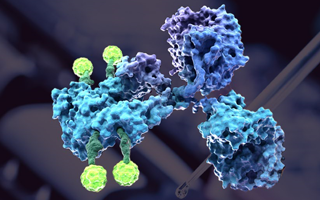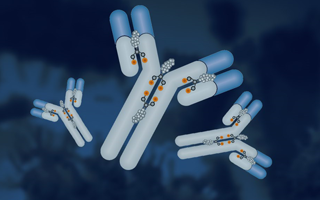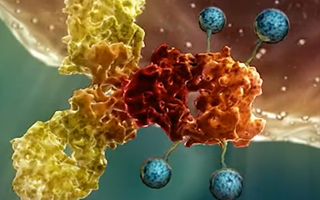Extracellular Space Positioning Antibody Development Service
Creative Biolabs has established a novel technology to position antibody in the extracellular space. Our scientists have identified the most suitable signal peptides (SPs) through optimized with strict validation tests and multiple parameters based on in silico analysis to achieve the proper location, efficient cleavage site, and robust expression. Currently, Creative Biolabs can provide versatile extracellular-targeting services with a balanced optimization strategy to ensure correct N-terminal cleavage and high product quality and bioactivity, especially for the biotherapeutic product like extracellular-secreting antibodies, proteins or particles.
Extracellular Space Positioning
Extracellular space (ECS) is the most attractive place outside the cell plasma membranes, which is occupied by fluid (extracellular matrix or culture medium: metabolites, ions, various proteins, DNA, RNA, lipids, etc.) contrast to intracellular. As for the bioproduct with high bioactivities like therapeutic Abs or other proteins produced at Creative Biolabs, ECS possesses two unparalleled advantages: a relatively unsophisticated composition than intracellular for easy downstream purification and a huge capacity volume for proper protein accumulation avoiding feedback inhibition or incompetent accumulation like inclusion body.
 Fig.1 scFv linked with the N-terminal signal peptide.
Fig.1 scFv linked with the N-terminal signal peptide.
Our scientists can employ a series of secretory signal peptides of a range of organisms with optimized parameters. They are short peptides (5-30 amino acids) present at the N-terminus of the majority of newly synthesized proteins for translocation across the ER membrane first, transportation to Golgi apparatus next and destining for ECS via the secretory pathway eventually. Although SPs are extremely heterogeneous without a strict consensus sequence, they do have a long stretch of hydrophobic amino acids (approximately 5-16 residues) as the core (h-region), which is tending to form a single α-helix and two more flanking regions:
i N-terminal short positively charged stretch of amino acids, named n-region
ii C-terminal neutral, polar end (c-region) with a cleavage site for recognition and cleavage by signal peptidase
Meanwhile, variable SPs are functionally interchangeable even between different species with great efficiency variations.
During the initiating process, there are two ways of translocation in both prokaryotes and eukaryotes:
Cotranslational Translocation
The newly synthesized SP will bind to a signal recognition particle (SRP), and the translation halts once the interaction occurs. Subsequently, the ribosome complex with half synthesized polypeptide approaches the RER translocon (SRP receptor) to continue the synthesis of the nascent protein into the RER lumen. Once the translation completes, the nascent protein will be processed by a signal peptidase to remove the signal peptide and keep folding into mature conformation. Finally, the most proteins undergo the secretion pathway to be packed into transport vesicles and destined for ECS.
Post-translational Translocation
In prokaryotes, the SP of a post-translational polypeptide is recognized by the SecB chaperone. Subsequently, the complex approaches the SecA ATPase to pump the protein through the translocon on the plasma membrane.
 Fig. 2 Illustration of the classical ER-Golgi secretory pathway.
Fig. 2 Illustration of the classical ER-Golgi secretory pathway.
Other Anchoring Modification Options provided by Creative Biolabs
Including the extracellular space, Creative Biolabs can also develop specific positioning antibody for a variety of destination, which including but not limited to:
| Extracellular Space | Extracellular Plasma Membrane | Intracellular Plasma Membrane | Cytoplasm |
| Nucleus | Endoplasmic Reticulum | Golgi Apparatus | Mitochondria |
| Chloroplast | Lysosome | Peroxisome | Vacuoles |
All of our antibody products and services can only be used for preclinical research studies. Do not use them on humans.
Related Services:
- Extracellular Plasma Membrane Positioning Antibody Development
- Intracellular Plasma Membrane-Anchored Intrabody Development
- Cytoplasm Positioning Intrabody Development
- Nucleus Positioning Intrabody Development
- Endoplasmic Reticulum Positioning Intrabody Development
- Golgi Apparatus Positioning Intrabody Development
- Mitochondria Positioning Intrabody Development
- Chloroplast Positioning Intrabody Development
- Lysosome Positioning Intrabody Development
- Peroxisome Positioning Intrabody Development
- Vacuole Positioning Intrabody Development

Welcome! For price inquiries, please feel free to contact us through the form on the left side. We will get back to you as soon as possible.
Contact us
USA
Tel:
Fax:
Email:
UK
Tel:
Email:
Germany
Tel:
Email:







